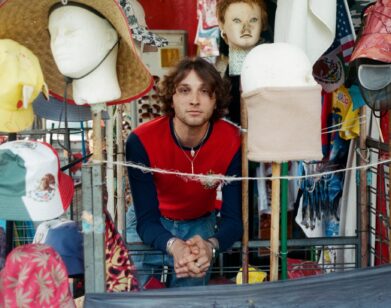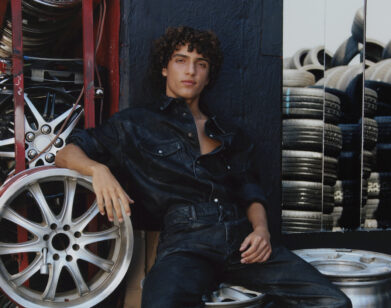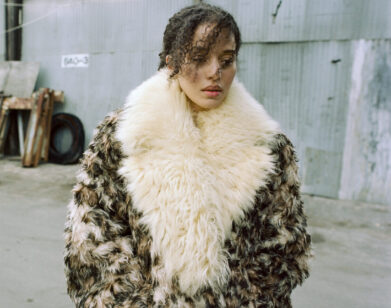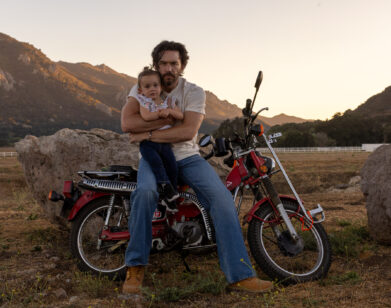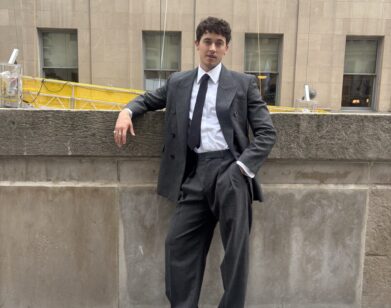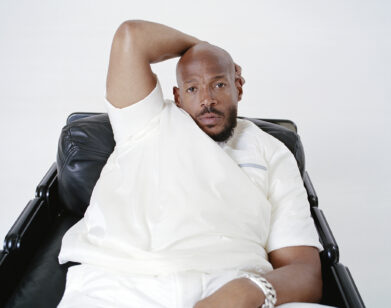New Again: Have Yourself a Movie Little Christmas
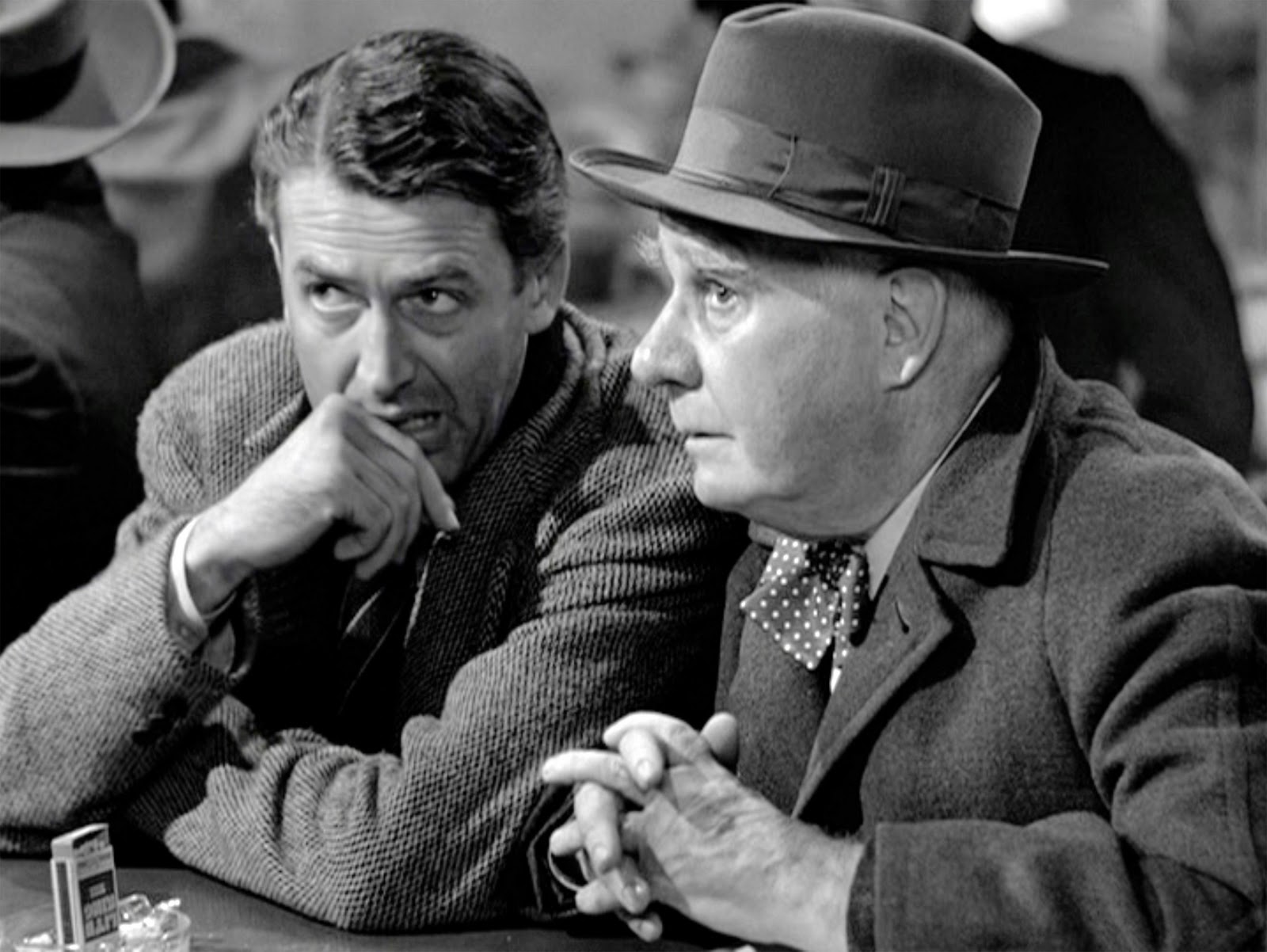
ABOVE: JIMMY STWEART AND HENRY TRAVERS IN IT’S A WONDERFUL LIFE.
Everyone has a favorite Christmas movie and if we had to guess, we’d say the current generation’s top holiday films include Elf, The Grinch, Charlie Brown‘s Christmas, and Home Alone, but the list of classics is endless. In the December 1990 of Interview, film critic Graham Fuller compiled his top 10 Christmas movies. Most of the films he featured are the “Rockwellian ’40s,” so if you’re looking for a more nostalgic nod to the holidays or simply something different from ABC Family’s 25 Days of Christmas inundation of romantic-comedies, check out films below. –Christiana Tiches
Have Yourself A Movie Little Christmas
by Graham Fuller
Selecting the ten best movies of 1990 is an activity likely to bring out the Scrooge in the most generous of filmgoers. It is, however, the season of compulsive list-making, so forget the turkeys and hold the sleigh while we dive back into the past for the Christmas movies most redolent of that panacea of pine, sparkle, tinsel, and tintinnabulation. Most were made in the Rockwellian ’40s, a decade that ripened itself for nostalgia even as it unfolded—and it is nostalgia, more than any other emotion, that fuels the collective Christmas reverie and makes its glow palpable. Christmas, though, can be blue as well as red, white, and gold, so beware—some of these films ache.
It‘s a Wonderful Life (1946)
All very well for James Agee to commend Frank Capra’s classic as “one of the most efficient sentimental pieces since A Christmas Carol;” yet remember that it is a film about a kind man, George Bailey (James Stewart), corroded by disappointment and the shortcomings of small-town family life. Not to dismiss the belief in community of Donna Reed’s luminous beauty, but the film noir fantasy that results from George’s crack-up on Christmas Eve has a dark and terrible poetry that repays constant viewing. Plus, it’s got Gloria Grahame. David Thomson’s 1985 novel Suspects is still the best commentary on this much-misunderstood movie.
The Apartment (1960)
Billy Wilder’s sordid story of a New York insurance clerk (Jack Lemmon) who wins promotion by lending out his flat key to the office philanderers, and ends up spending the holiday with the suicidal girl (Shirley MacLaine) his boss (Fred MacMurray) discards, hovers tantalizingly between tragic and comic. The bittersweet delight include Lemmon shaving with his bladeless razor, Edie Adams’s malicious secretary, an the booze-befuddled pickup (Hope Holiday) who woos Lemmon with: ” ‘Twas the night before Christmas and all through the house/ Not a creature was stirring. Nothin’. No action. Dullsville. You married?”
Scrooge (1951)
It was this or Miracle on 34th Street (1947)—no contest when you consider that Alastair Sim’s Ebenezer Scrooge would have frozen Edmund Gwenn’s Kris Kringle to his grotto with one baleful stare. A truly great, tortured performance by Sim (whom Dickens must have had in mind) is complemented by the nightmarish mise en scène, while the appearance of Marley’s screeching ghost is genuinely frightening. Directed by Brian Desmond Hurst, it stands alongside David Lean’s Great Expectations (1946) and Oliver Twist (1948) as one of the most faithful of Dickens adaptations.
A Christmas Story (1983)
“A crummy commercial? Sonofabitch,” fumes nine-year-old Ralph (Peter Billingsley), disappointed by the Ovaltine slogan he’s decoded from Radio Orphan Annie’s secret message. Based on Jean Shepherd’s In God We Trust: All Others Pay Cash and superby written, Bob Clark’s portrait of Christmas in ’40s Indiana, which focuses on Ralphie’s Machiavellian ploys to lay his hands on a Red Ryder Carbine Action Range Model Air Rifle, succeeds because it frequently debunks the very sentiment that sustains it. Not the least of the film’s joys is its bored and dyspeptic Santa—dispatching Ralph with a boot—and his two malevolent elves.
Christmas Holiday (1944)
Jilted by his fiancée on Christmas Eve and grounded in St. Louis, a soldier takes a nightclub chanteuse (Deanna Durbin) to midnight Mass. He is moved by her tears, and she tells him of her undying love for her husband (Gene Kelly)—a psychotic racetrack hustler with a nice line in charm and an overaffectionate mother—who breaks jail even as they talk. In this wonderfully perverse film noir directed by Robert Siodmak, Gene Kelly preempts both Robert Walker in Strangers on a Train and Robert de Niro in The King of Comedy, and Durbin looks as fragile as a glass ball on a Christmas tree.
Comfort and Joy (1984)
Radio D.J. Dickie Bird (Bill Paterson)—also ditched by his girlfriend—is solaced by the part he plays in ending Glasgow’s Ice-Cream Wars (though the film plays down the violence that actually occurred). The spectral lights and nursery jingles of the mirage-like ice-cream vans turn Bill Forsyth’s rueful, unsentimental story into a lyrical comedy of healing. A midwinter night’s dream.
The Man Who Came to Dinner (1941)
When Sheridan Whiteside (Monty Woolley), an acidic but lovable national radio celebrity, breaks his hip and convalesces at a suburban home one Christmas, he drives his hosts, his secretary (Bette Davis), his nurse (Mary Wickes, who was recently seen in Postcards from the Edge), and everyone else to distraction. Kaufman and Hart’s “Sherry”-and-vitriol cocktail—a toast to Alexander Woollcott—has lost none of its kick in 50 years. Look out for the mad aunt, a killer cameo by Ruth Vivian. A Christmas in Connecticut (1945) was a pallid attempt to capture a similar mood.
Swiss Miss (1938)
I’m cheating here, but it’s impossible to get through the holiday without Laurel and Hardy, whose Christmas movie Babes in Toyland (1934) pales beside this inspired Alpine nonsense. It contains one of Laurel’s greatest gags: resigned to a St. Bernard’s refusal to give up its brandy, he plucks a chicken, whereupon the snowstorm of falling feathers prompts the dog to do its duty, effecting Stan’s instant inebriation.
The Magnificent Ambersons (1942)
Orson Welles’s butchered masterpiece wins my vote over Meet Me in St. Louis (1944) for the finest evocation of Christmas Past, although others will disagree. It isn’t really a Christmas movie per se, but the sleigh ride, with Isabel Amberson (Dolores Costello) and Eugene Morgan (Joseph Cotten) briefly reunited, is an epiphany that carries it into that realm. Watch, too, for the extraordinary shot of Isabel tragically silhouetted in the hallway as Eugene leaves the Amberson ball.
The Night Before Christmas (1941)
Tempted out of his hole by a gift-wrapped cheese on a mousetrap, Jerry explores the glistening cornucopia beneath the Christmas tree before he and Tom turn it into the inevitable battleground. One of the more benign Hanna-Barbera cartoons featuring the cinema’s greatest love-hate relationship, this sublimely atmospheric Yuletide entry brings the cat a Scrooge-ian crisis of conscience. Having paid a painful penalty for puckering up under the mistletoe, Tom ejects his tiny nemesis through the mailbox into a blizzard…and then thaws him out in the hearth. The message, of course, is peace on earth and good will to all mice, though one may safely assume that hostilities were resumed on Boxing Day.
THIS ARTICLE ORIGINALLY RAN IN THE DECEMBER 1990 ISSUE OF INTERVIEW.
New Again runs every Wednesday. For more, click here.

